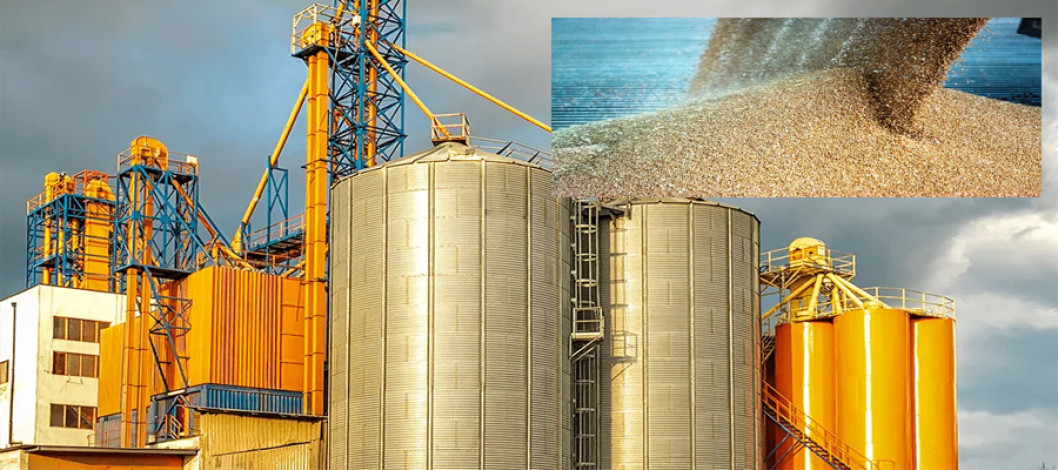
File Photo
Silos and grain handling systems are critical for efficient storage, processing, and transportation of grains and oilseeds in agricultural operations. Below is a concise overview based on current information:
Silos
Purpose: Silos are structures designed for bulk storage of grains (e.g., wheat, corn, soybeans) or silage. They protect against moisture, pests, and spoilage, ensuring grain quality for food, feed, or fuel.
Types:
*Tower Silos: Cylindrical, 10–90 ft in diameter, 30–275 ft tall, made of steel, concrete, or wood. Used for grain or silage.
*Hopper Bottom Silos: Feature a conical base for easy unloading, ideal for frequent discharge cycles.
*Flat Bottom Silos: Cost-effective for large-scale storage of free-flowing grains like wheat or maize.
*Grain Bins: Often metal, corrugated, with ventilation systems to maintain dry conditions. Common in smaller or larger facilities.
*Bunker and Bag Silos: Used for silage or temporary storage, with plastic covers or tubes.
Key Features:
*Ventilation and Aeration: Prevent spoilage by controlling temperature and humidity.
*Temperature Monitoring: Sensors detect heat buildup to prevent mold or insect issues.
*Fumigation Systems: Control pests for long-term storage.
*Automation: IoT controllers and PLC systems enable remote monitoring and automated processes like drying or handling.
Safety Risks:
*Entrapment/Engulfment: Crusted grain can collapse, burying workers.
*Dust Explosions: Grain dust sparks can ignite, requiring dust control systems.
*OSHA mandates permits, lockout-tagout, lifelines, and observers for bin entry.
*Grain Handling Systems
Components:
*Conveyors: Belt, chain, or spiral conveyors transfer grain horizontally or vertically (10–500 tons/hour).
*Bucket Elevators: Lift grain to silo tops for filling.
*Augers: Move grain for loading/unloading, with designs like sweep augers for silo discharge.
*Flow Valves and Slide Gates: Control grain flow to prevent leakage or cross-contamination.
*Cushion Boxes: Reduce grain damage during transfer.
*Dust Removal Systems: Minimize explosion risks and maintain air quality.
Key Functions:
*Feeding/Distribution: Grain is conveyed to silo tops via drag/belt conveyors.
*Circulation: Prevents hardening with automated cycles based on moisture levels.
*Discharge/Packaging: Grain is unloaded to trucks or bagging lines with minimal manual handling.
*Cleaning/Drying: Pre-storage processes ensure suitable conditions to avoid spoilage.
*Automation: Systems like ControlByWeb IoT controllers monitor bin levels, equipment status, and environmental conditions, reducing labor and improving efficiency.
Modern Innovations
*Smart Silos: Equipped with moisture control and remote monitoring, as seen in Zimbabwe’s GMB Smart Silos (56,000-tonne capacity).
*Inflatable Silos: China’s 9,000-tonne inflatable silos in Changsha demonstrate scalable, rapid-deployment storage.
*Robotics: Devices like the Grain Weevil robot level grain to prevent crusting and entrapment.
*Turnkey Solutions: Companies like Myande and Bühler provide end-to-end systems, from design to commissioning, integrating silos, conveyors, and digital analytics.
Market and Applications
*Market Growth: The global grain silos and storage system market is projected to reach $2.31 billion by 2029, driven by demand for high-value crops and advanced farming practices.
*Applications: Used in grain elevators, feed mills, flour mills, and port terminals for domestic and international trade.
*Efficiency: Grain terminals with silo systems improve turnover, reduce losses, and lower transport costs, supporting food security.
Safety and Maintenance
*OSHA Standards: Require dust control, equipment lockout, and worker training to prevent fires, explosions, and engulfment.
*Maintenance: Regular checks on ventilation, temperature sensors, and structural integrity extend silo life (25–35 years).
*Bridging/Rat-Holing: Material blockages require careful cleaning to avoid flow issues or contamination.
Considerations
*Material Choice: Steel silos are durable and efficient; concrete or wood suits specific needs.
*Cost: Varies by size (5–1,500 tons) and features like automation or insulation.
*Environmental Control: Critical in humid or hot climates to prevent spoilage.
For pricing on specific applications or equipment, consult with Mayande, Buhler, SRON, or other major global companies and suppliers, as costs vary depending on capabilities and customization. If you need details about a specific system, region, or product, talk to them about those as well.
-SZK, based on online information
Comment Now